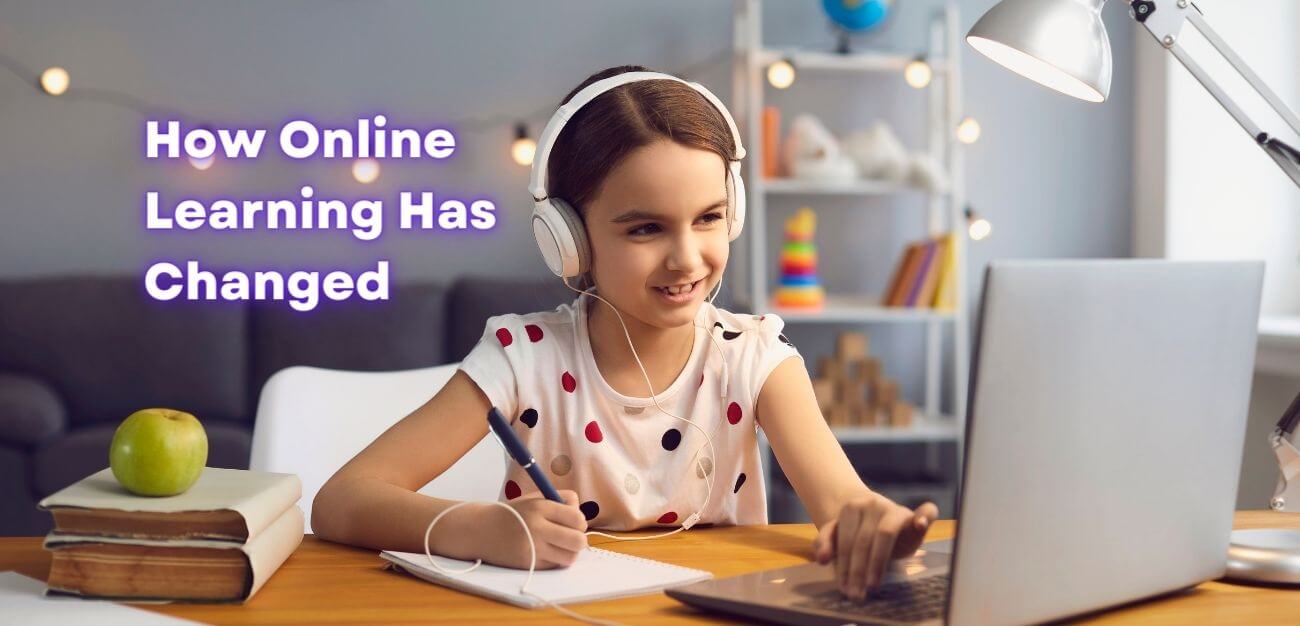The COVID-19 pandemic has brought about immense changes in many aspects of our lives, including how we learn and educate ourselves. The pandemic has forced many schools and universities to make drastic changes in their teaching methods, and online learning emerged as an essential tool for keeping education going in challenging times. Even as the pandemic slowly becomes a distant memory, it’s increasingly becoming clear that online learning is here to stay.
All parents will remember how frustrating online learning was at the pandemic’s beginning. Schools were forced to close quickly, and virtual classrooms were set up seemingly overnight. There were connectivity issues, presentation problems, security concerns, and an overall lack of understanding of virtual classrooms. But thankfully, a lot has changed since then. Online platforms have been updated, security issues have been solved, and overall, children have become more comfortable with learning from a teacher online.
Let’s take a closer look at how online learning has changed since the pandemic.
Increased Availability and Accessibility
In the past, online learning was often only available to a niche group of students who took courses on their own time, outside of traditional classrooms. However, the pandemic shook up this model, with even traditional schools and universities offering courses online. This has led to a massive increase in the availability of online courses, both at the K-12 and college levels.
In addition, online learning has made education more accessible to students who may have previously faced barriers to attending traditional schools or universities. For instance, students with disabilities, those living in remote or rural areas, and those with work or family commitments can now access education from anywhere with an internet connection. The flexibility that online learning provides has opened up new possibilities for students who face a range of barriers.
New Technologies
Video conferencing platforms such as Zoom and Google Meet were being used for virtual classrooms and online tutoring during the pandemic. These platforms provided critical opportunities for students to connect with peers and teachers, even when they were not able to be in the same physical location.
The pandemic also led to the creation of many new technologies that enhance the learning experience in an online environment. Interactive tools such as virtual whiteboards, chat rooms, and video lectures are now being used to help students engage with course material and interact with their peers. These technologies are being refined and improved daily, with new features added to engage students and help them stay on track with their learning.
Greater Flexibility
Thanks to online learning, students are able to complete coursework at their own pace, on their own schedule. This can help them balance their education with work or family responsibilities, which is especially vital during difficult times. More classes are also offered at more times throughout the day since students can connect more easily.
By allowing students to set their own pace, online learning can help reduce the stress of studying during certain days or hours. Without added stress, students may see improved academic performance.
Collaboration
Of course, online learning has benefits and limitations, just as there are with traditional classroom learning. One of the most significant challenges with online learning is that it is harder to collaborate with peers and teachers, leading to feelings of isolation and disconnectedness. This can be especially true in larger group classes. At Dropkick Math Academy, we limit our class sizes to four students so children don’t feel “lost in the crowd.”
To help combat these feelings, many teachers and educators are developing new systems to encourage collaboration and engagement among online learners. For instance, many are implementing group projects and team-building exercises to help students work together and form meaningful connections.
Increased Engagement
Speaking of engagement, online learning has allowed for even more engagement than traditional classroom learning in many ways. With online courses, students have access to a wide variety of resources that they can explore and utilize as a part of their learning. This can create exciting and memorable experiences, inspiring them to be passionate about learning.
Our educators at Dropkick Math Academy have also noticed an increase in engagement over traditional classrooms. It is thought that children may have more confidence if they can virtually raise their hand and offer answers or ask questions through chat boxes instead of in person. This can help build their confidence to ask these questions in the future in an in-person classroom setting.
Personalized Learning
Finally, online learning allows for a personalization of learning that is unmatched by traditional classroom learning. Students can learn at their own pace and choose which sources of instruction they want to use, creating a personalized experience that addresses their individual learning styles and needs.
In addition, online learning sometimes allows teachers and educators to gather data on how students are doing. This data allows for creating customized learning experiences that can address specific issues a student may be having. This personalization can be beneficial for students who may be struggling or need extra support.
Conclusion
Overall, the pandemic has accelerated the adoption of online learning, and these changes will likely continue to shape education for the foreseeable future. While the sudden shift to online learning has presented challenges for both educators and students, it has also provided new opportunities for innovation and growth in education.
Online learning has allowed students to complete coursework independently in a safe and remote environment while helping to better engage students and boost their confidence. This is an evolution in education that is likely to continue, even after the pandemic subsides. As educators continue to refine and improve the online learning experience, we can expect to see even more advantages and benefits to this new education model.





